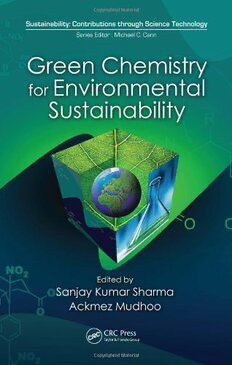
Green chemistry for environmental sustainability PDF
449 Pages·2010·11.232 MB·English
Most books are stored in the elastic cloud where traffic is expensive. For this reason, we have a limit on daily download.
Preview Green chemistry for environmental sustainability
Description:
When the Nobel Prize Committee recognized the importance of green chemistry with its 2005 Nobel Prize for Chemistry, this relatively new science came into its own. Although no concerted agreement has been reached yet about the exact content and limits of this interdisciplinary discipline, there seems to be increasing interest in environmental topics that are based on the chemistry embodied in this subject. Linking green chemistry practice to environmental sustainability, Green Chemistry for Environmental Sustainability illustrates the efforts being made to remediate a scathed environment into a pristine one. Links Green Chemistry Practice to Environmental Sustainability Eminent international experts present research on and the application of green chemistry and engineering in addressing current issues of an environmental and social nature. They cover sustainable development and environmental sustainability with chapters on green chemistry and engineering research, the design and synthesis of environmentally benign chemical processes, green approaches to minimize and/or remediate environmental pollution, the development of biomaterials, biofuel, and bioenergy production, biocatalysis, and policies and ethics in green chemistry. The book also explores economics, environmentally benign technologies for greener processes, computational methods and modeling, and green approaches to minimize air and water. Green chemistry has brought a relatively prompt and positive paradigm shift in the overall use and management of natural resources and raw materials for the development of society with a subtle promise to cause far less pronounced harm to the environment. This text provides insight into the chemical and biochemical technologies that are being studied, optimized, and eventually developed to promote environmental sustainability. It provides up-to-date information on selected fields where the principles of green chemistry are being embraced for safeguarding and improving the quality of the environment.
See more
The list of books you might like
Most books are stored in the elastic cloud where traffic is expensive. For this reason, we have a limit on daily download.
